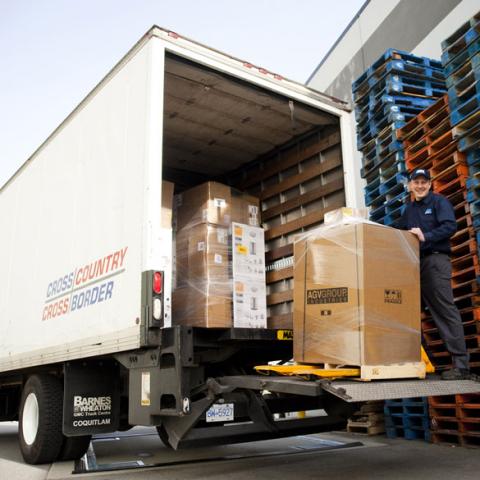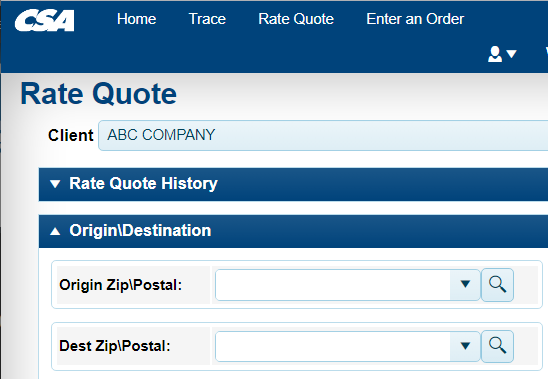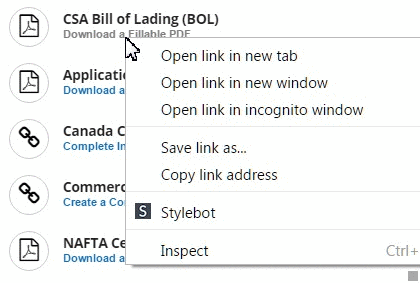How to Calculate Freight Class
Shipping pallets of goods along the U.S. highway is usually done through LTL freight (less-than-truckload) or TL (full-load) carriers. For this, most common carriers use a freight class calculator to help set a precedent for what they may need to spend. Because space in a freight truck is limited, a freight class calculator is used to determine the value and difficulty of sending different types of products.
Fleet companies need to maximize the space they have available in their trucks, and by having a freight class density calculator, they can provide a consistent price range for consignors.
What Is Freight Class?
A freight class represents how dense a product is and how easily it can be transported. Before shipping a pallet of goods, it will be assigned a class designated by the National Motor Freight Traffic Association’s (NMFTA) freight class chart.
With a freight density calculator, a carrier can quickly ascertain the appropriate tariff for a product given the company's transportation route. This process can be confusing, as every carrier has different rates due to being on various transportation networks. One of the easiest ways to circumvent the complexities of LTL shipping is by going with an expert logistics company like CSA Transportation where pallet shipping rates are used instead of freight class.
With a class calculator, you can speed up transporting your property and potentially save money. A shipping class calculator can make it easy to determine which freight class your shipment belongs to, allowing you to plan your budget seamlessly.
CSA makes it easy by using our internal freight calculator based on your pallet dimensions, weight, and commodity to determine your product’s shipping cost. This saves you time and eliminates a complicated calculator so we can easily ascertain the degree of difficulty it is to move and stow a commodity, as well as figure out the liability involved to determine the product’s class.
Ready to figure and plan your next shipment? Get a free quote calculation now from CSA:
How to calculate freight class, step by step
A freight quote calculator will put your shipment into one of 18 classes. The classes have a range between 50 up to 500, with the lower class number indicating an easier to move and a more dense package, resulting in a less expensive price. An example of a 50 class shipment would be a durable freight that only takes up the dimensions of a standard pallet. A 500 class shipment, which is rare for standard consumers, would be along the lines of gold bars or irreplaceable artifacts.
The characteristics to plug into a freight class calculator would be:
Density
Density is the prime factor that goes into determining the appropriate freight class for a product. Density is simply the weight of a shipment compared to its overall dimensions. Generally, the denser the freight, the lower the class, resulting in a better price point. Density in the U.S. is calculated in pounds per cubic foot.
Handling
Handling takes into account any additional equipment or safeguards that need to be put in place to transport a product. If special equipment is necessary to move freight between terminals, then this will be factored into the overall price by adjusting the class. Aside from equipment, the packaging and durability of an item will affect its handling rating. If a product is especially fragile to handle, then expect it to increase the freight class.
Stow-ability
Stow-ability is your shipment’s ability to fit into the trailer with other pallets and commodities. When using a freight class calculator, aspects such as the shape, footprint, or even if it is hazardous need to be taken into account. Similar to handling, if a shipment requires special regulations, and precautions, or is just oddly shaped and makes it harder to place other freights next to it, this will adjust its class.
Liability
Liability factors into the classification by setting how valuable your freight is or if extra security is needed to protect it from being stolen or damaged.
Freight Class Calculator vs Working With A Shipping Company
An individual freight class calculator, like what you might find on other websites, is for estimating what you may need to pay to have your freight shipped out. However, depending on the various aspects of your shipment, you may need to rely on an LTL logistics specialist to help specify where your shipment actually falls on the freight class chart.
Thankfully, CSA Transportation has an expert team of logistic operators that can help you with your freight shipping from the USA to Canada.
With the CSA Network, you can rest assured that your shipment will have the proper and complete work details in order. As industry leaders, we know how to avoid paperwork errors, which can cause delays and be costly.
In choosing to work with a company like CSA Transportation, LTL clients can expect optimal service to reduce mistakes when communicating with partners. This can ultimately help you save when choosing to ship goods through an LTL carrier.
Regardless of the size and scope of your company’s shipping needs, CSA Transportation can provide advice to make sure that each of your orders has been optimized. If you have any questions about using a freight class calculator, you can contact CSA today. As experts with a national network that spans Canada and the U.S., we can support your company with cost-efficient and superior shipping solutions.






